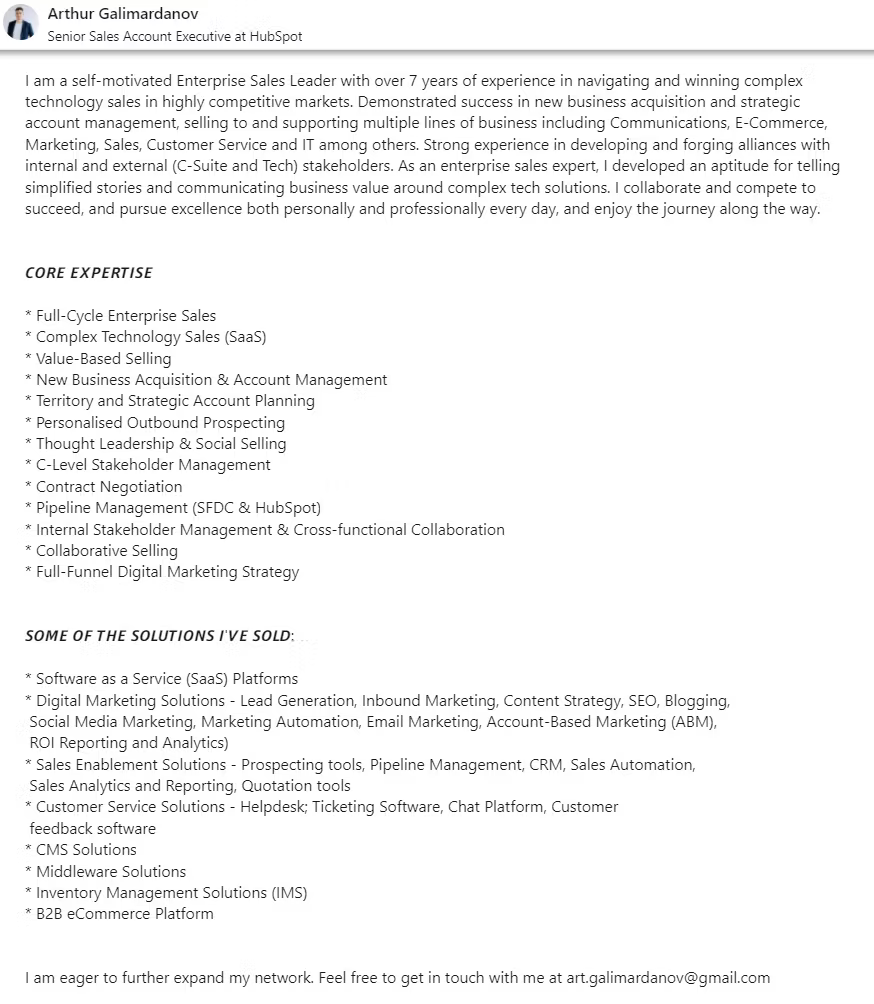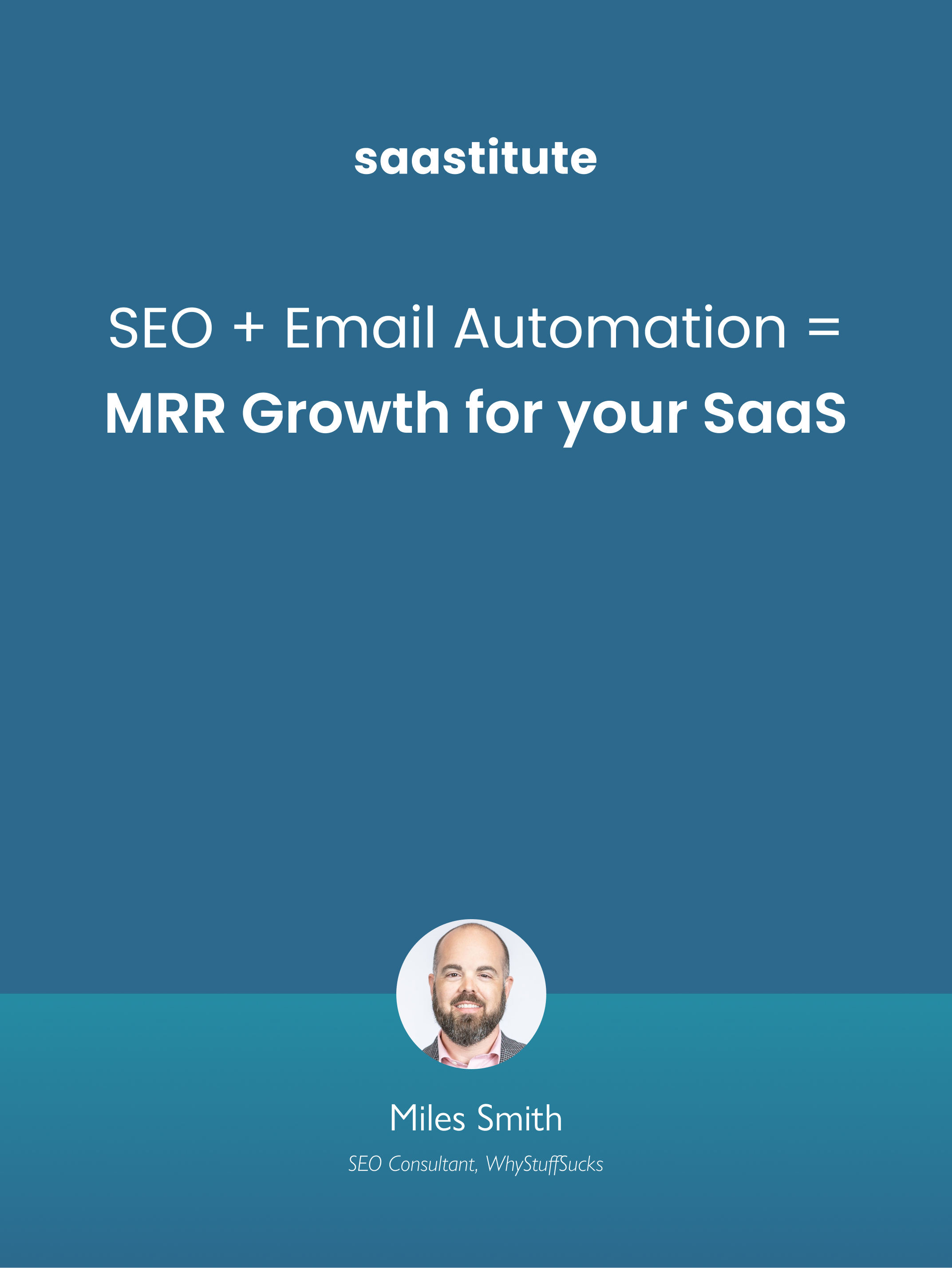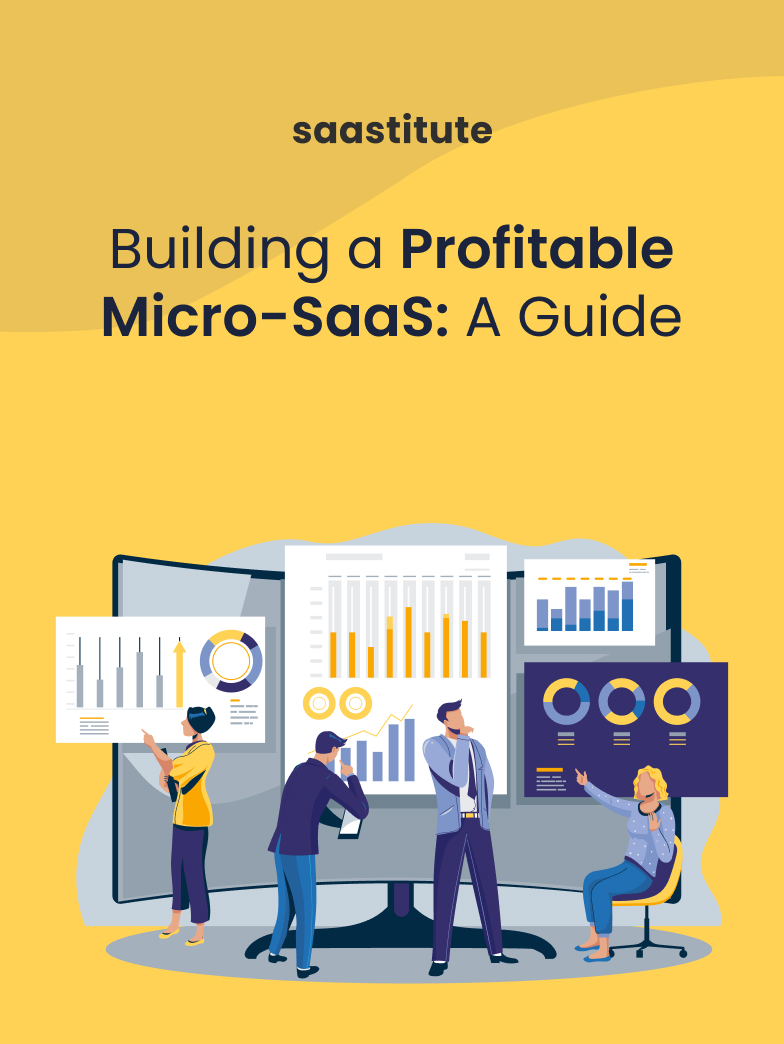Tips to Optimize your LinkedIn Profile as a B2B Salesperson
LinkedIn is a gold mine for B2B Sales, and as a B2B Salesperson, your LinkedIn profile is the foundation of your social selling campaign. Learn how you can optimize your LinkedIn profile, things you should keep in mind, and mistakes you should avoid.

Social selling as a strategy has never been more relevant than now. While there are several social media platforms, for B2B Sales LinkedIn is a gold mine. There are about 750 million users on LinkedIn, of which about 41% (310 million) are active monthly. This makes LinkedIn one of the most powerful platforms for B2B Salespeople to reach out and connect with possible future clients.
It’s not easy to generate leads by just having a presence on LinkedIn. You can have a great product, a killer sales pitch, a list of prospects, and still fail in getting the chance to follow through- All because of an average LinkedIn profile. To top it off, you might not feel so great after checking your Social Selling Index score. There is no doubt about the importance of your LinkedIn profile when it comes to social selling. It acts as a business card that can make a big difference in landing sales meetings. Your LinkedIn profile can be a big deciding factor and a well-optimised one can tip the scales in your favour.
But what are the ingredients that make a good LinkedIn Profile?
We went on a mission to find out. We dived deep into the rabbit hole and sifted through more than a hundred LinkedIn profiles of Sales executives, Sales managers, Sales associates from around the world. We also picked the brains of the Sales and Marketing Head of Antwak, Hermaan Kohli. And finally, we made a list of best practices you can follow while creating and optimising your LinkedIn profile.
Let's take a look:
LinkedIn Headline
Let’s take the example of a newspaper. On opening a newspaper, you are faced with multiple stories- all waiting for your attention. How do you decide which one to read further and which one to skip? Let me guess. By reading the first thing that your eyes meet - headline. A Headline plays a crucial role in grabbing the attention of your target audience, which is why you need to make it impactful. After all, first impressions matter. In the case of your LinkedIn too, your headline will bring the right set of eyeballs to your profile.
Your LinkedIn headline should ideally include your designation and your place of work; you can also add your experience.
Here are some of the things to keep in mind while writing your LinkedIn Headline as a B2B salesperson:
Avoid technical jargon
This one is for all the fancy folks with their fancy titles. We get it, a Sales Development Rep (SDR) is different from a Business Development Representative (BDR). But do you think your prospects would know or even care about the difference? Sticking to a more general (read: widely known) designation is a much more effective way of forming a rapport with your prospect. The chances of them engaging with you will take a hit if they don’t understand your role in the first place.
TL;DR: Instead of using ‘SDR/BDR’ as your designation in your headline, use ‘Sales associate, Sales Representative, Sales Manager.’
Add Value Proposition
Nobody likes a dull, drab headline. If you want to stand out from the crowd, you need to tell them what makes you different. There may be millions of ‘Sales Associates’ on LinkedIn alone, so what makes you worth engaging? Use the space you have effectively by including your value proposition. As part of the sales team, think about what you can bring to the table and how you can help your customers better.
TL;DR: Instead of only using “Sales @XYZ”, use “Helping SaaS startups grow with @XYZ”
Use appropriate keywords
If you want your LinkedIn profile to be more searchable, you need to optimise it in terms of SEO. That essentially means: use keywords relevant to your role in your LinkedIn headline. Including appropriate keywords in your headline will give you an edge and lead to more people finding your profile.
TL;DR: Use niche-specific keywords in your LinkedIn Headline like “B2B SaaS”, “SaaS Sales”, “SEO growth”.
Claim what you can prove
Your LinkedIn headline is your first chance at making an impression, and you don’t want it to be the last; you want prospects and leads to go through your entire profile. A general rule of thumb is to avoid hyperbole at all costs. Nobody likes a show-off. Avoid using words like “Best”, “Expert”, “Diligent”, because let’s be honest: there is no real way of proving vague claims.
TL;DR: “Humility is not thinking less of yourself, it’s thinking of yourself less.”- C. S. Lewis
LinkedIn Headline Examples
Here are a few examples of what a good LinkedIn headline looks like:



LinkedIn Description/About
After your LinkedIn headline, the next point of focus is your LinkedIn Description or LinkedIn About.
“Your LinkedIn profile should speak volumes about your knowledge, and your ‘About section’ should be a concise summary. It should contain what your core skill set is, any accomplishments that you have or anything in particular that you want to highlight that should catch the eye of an individual.”
Write Your Story
To stand out from the line of generic LinkedIn descriptions, you need to have a story to tell. Your story should be CPR.
Coherent: meaning it should follow a thought-out structure
Personal: meaning it should talk about your skills, expertise, learnings
Relevant: meaning it should speak to your target audience and industry folks

Have a Hook
Now that you have a story to sell, you need a hook. If the first sentence of your content, whether it’s a blog, a newsletter or your LinkedIn Summary, fails to interest your reader, chances are they might not continue reading. Find something worth the attention of your target audience. You can start with a common problem statement for which you have a solution. You can also go the funny route or use a relevant quote- anything that would compel your audience to read further.

Include Quantifiable claims
If you want to project yourself as an expert in your field, you need to back your claims with some numbers. Your LinkedIn About section should ideally be structured in terms of your KPIs (Key Performance Indicators) and KRAs (Key Result Areas) with quantifiable claims indicative of your impact. “Generated a revenue of X USD in one year”, “Got 20x growth” - everything should revolve around numbers.
Add a Call-To-Action (CTA)
Finishing off with a good CTA can do wonders for you. You can add your contact information (ideally a work email ID) at the end of your LinkedIn About for any prospect to reach out to you.
Experience: Use the Dot-Dash approach
Let’s also talk about another crucial section of your LinkedIn profile: Experience. As a B2B salesperson, your past experience adds value to your overall pitch. It gives you the chance to talk about your KPAs and KRAs in more detail. But not everyone has the time (or patience) to go through incoherent paragraphs. A well-structured experience section signifies a competent salesperson who values their prospects' time. Hermaan’s pro tip will come in handy for you: the dot-dash approach.
Dot-dash is an outline format that uses bullet points to create a solid, easy-to-follow structure to your content. Think about your key responsibilities and divide them into three bullet points. These are your ‘dots’. Now flesh out your ‘dots’ by further explaining your impact and don’t forget to include quantifiable claims (refer to the previous point here). These are your ‘dashes’. This approach will help you convey your experience, skills, and value effectively and efficiently.

In conclusion
Here's the fact: LinkedIn is not just a place where people look for a job. Though social selling has been a buzzword for some time now, executing it takes thought and effort. As a B2B Salesperson, your LinkedIn profile is the foundation of your social selling campaign. Smart businesses rely on it to effectively reach prospects, and conduct sales lead generation. When it comes to creating an upgraded profile, there are so many possibilities. There is a lot more to your LinkedIn profile than just putting up some recent work experience, education, and location. All these factors are important but if you’re not careful they can lead to a plain vanilla profile and give the impression that you’re not someone worth meeting. You can use the above tips as an initial base to get started.
Read more about social selling here.














.svg)


